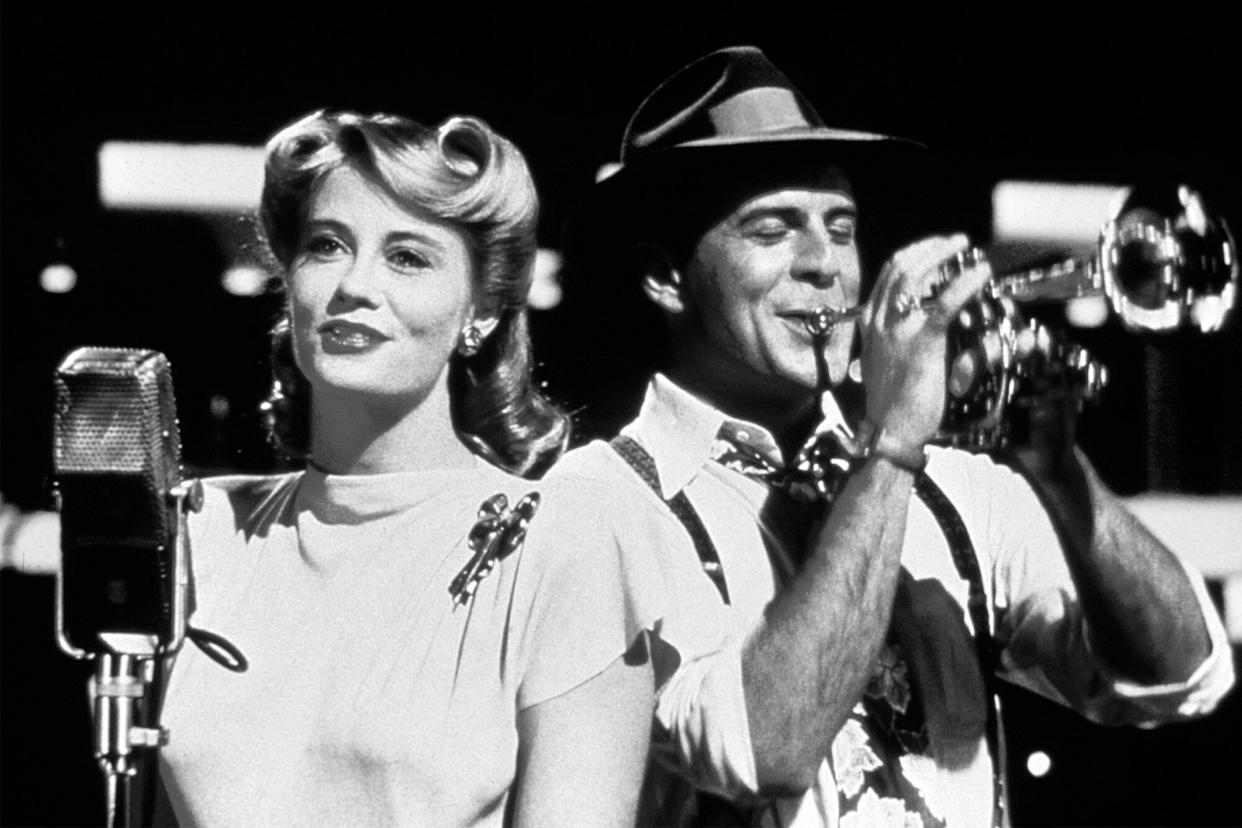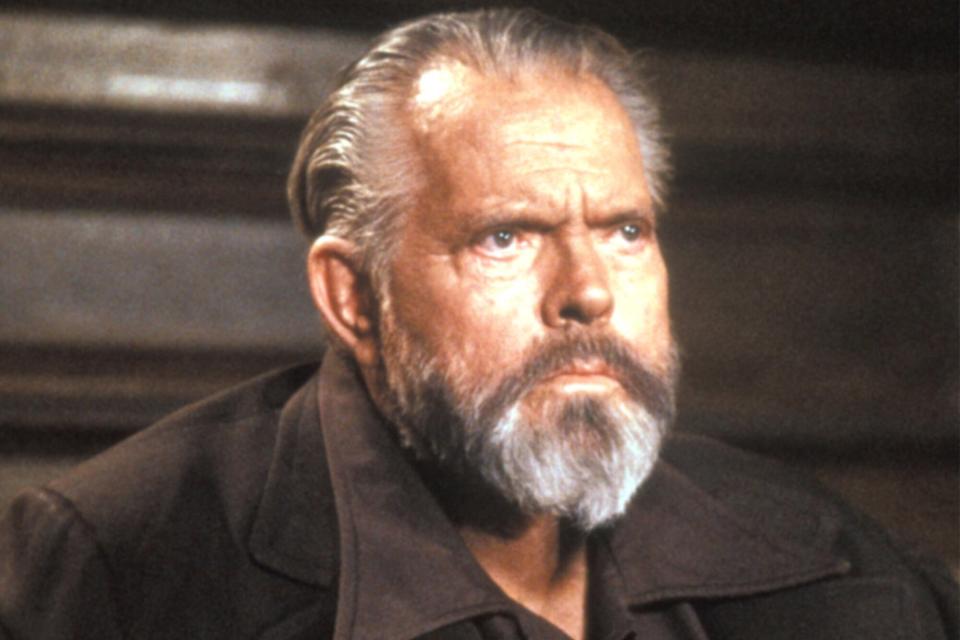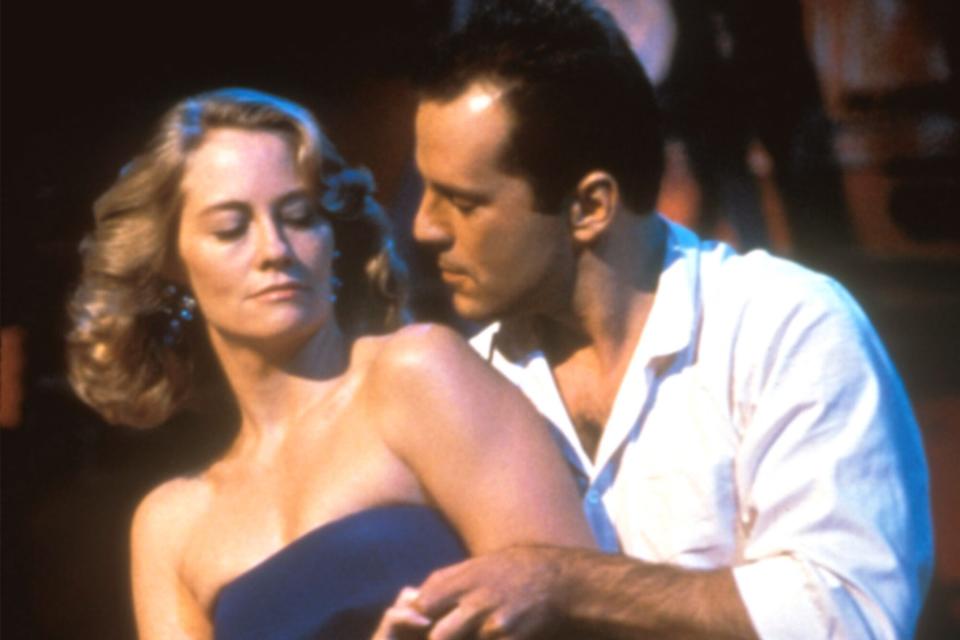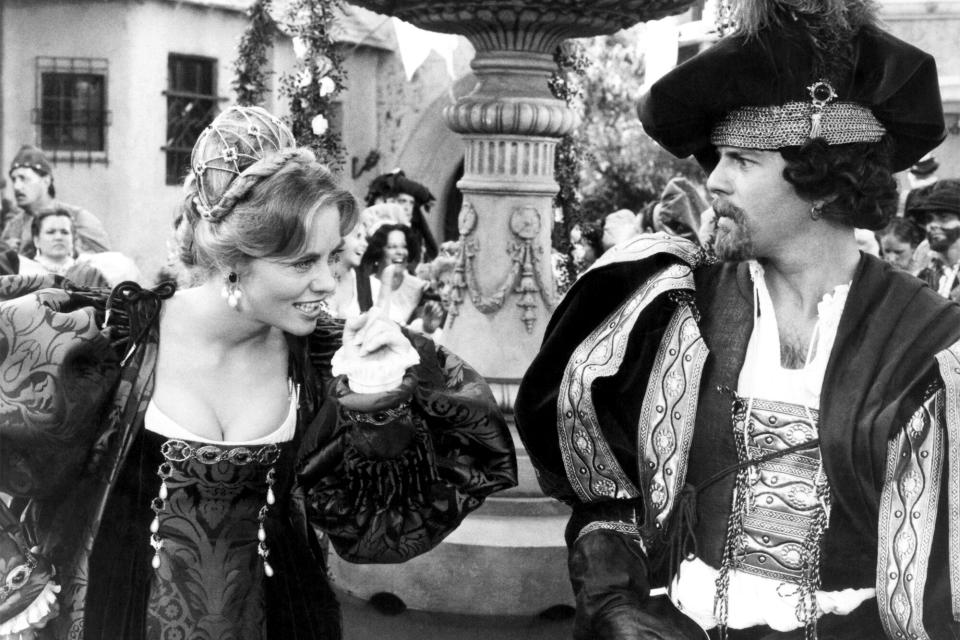How “Moonlighting” recruited Orson Welles, Billy Joel, and Shakespeare for its most iconic episodes

The Blue Moon Detective Agency is open for business once more! Or at least, for our viewing pleasure.
On Tuesday, after years of languishing in a vault, Moonlighting has finally hit streaming with all five seasons of the hit 1980s series now available on Hulu. The series, which ran from 1985 to 1989, stars Bruce Willis as smart-aleck private investigator David Addison, opposite Cybill Shepherd as model-turned-detective-agency-manager Maddie.
But besides the crackling chemistry between Shepherd and Willis (which in turn, led to the TV term the "Moonlighting curse"), the show was also known for its distinctly cinematic approach — from its pop music-laden score to its ambitiously crafted episodes.
"Part of that was my attitude," creator Glenn Gordon Caron tells EW. "I didn't aspire to be in television. So my feeling was I'm going to do whatever I have to do, burn the place down if I have to, but I want these things to be as good as they can be." (Keep in mind that in 1985, television hardly had the "prestige" branding it does today and was not the domain of movie stars as it so often is now).
Three episodes in particular stand out as testaments to Caron and his writing staff's inventiveness — season 2 episode, "The Dream Sequence Always Rings Twice," which pitches David and Maddie into two different versions of a 1940s black-and-white film, season 3's "Atomic Shakespeare," scripted entirely in iambic pentameter, and "Big Man on Mulberry Street," featuring an extended dance number to a Billy Joel song.
"I'm extraordinarily proud of a handful of episodes that I think are incredibly bold, and at the same time, wildly entertaining and so unexpected," he adds.
Caron says part of why these episodes happened at all was because the network basically gave them carte blanche to try whatever they wanted. "Anything that occurred to me or to someone who happened to be standing nearby, we would just go ahead and do, and there was a lot of blind faith on the part of the network, which was great," he says. "I wasn't smart enough to know what I didn't know. And I didn't care when they said we have to make them in seven days. I said, 'No, they just really have to be good.' I was admittedly very arrogant, and very ignorant, which is a deadly combination. But thankfully, I had a lot of people around who were patient with me and recognized that what we were doing was special, and to the extent that they could, they supported it."
Here's how Caron and his team conceived of and executed some of the most memorable moments (and guests in front of and behind the camera) on Moonlighting.
It's all there in black and white

Everett Collection Cybill Shepherd and Bruce Willis on 'Moonlighting'
Perhaps one of the most celebrated episodes of the series is season 2's "The Dream Sequence Always Rings twice." When David and Maddie meet the owner of a nightclub, they're told of an unresolved murder from 40 years prior. The two bicker about who did it, accusing the other of being sexist. But later that night, they each have a dream — in black and white, naturally — about their respective theories, casting each other as the two suspects, nightclub singer Rita and trumpet player Zach.
Caron says it was writers Carl Sautter and Deborah Frank who came to him with the idea of the dual dream sequences. "I don't remember who said, 'Let's do it in black and white,'" he remembers. "It may have been them. But I said, 'Let's do it in two styles of black and white. Because to me there was a real difference between MGM black and white and Warner Brothers black and white. Warner Brothers was much more rough and tumble. MGM was kind of glossy. One felt implicitly like Maddie's black and white, and the other very much like David's black and white."
The result was two wildly different sequences (actually shot on black and white film stock, different types for each style). Maddie's sequence has the emotionality and sleekness of a women's picture in the vein of Mildred Pierce, while David's is pure Warner Bros. noir, a la a Humphrey Bogart film.

Everett Collection Orson Welles on 'Moonlighting'
The episode also features one other nod to classic films — it's introduced by Orson Welles, who is there to assure audiences that the sudden shift to black-and-white is not a sign there is something wrong with their televisions. Shepherd, who had been a longtime paramour of director Peter Bogdanovich, knew Welles through the men's close friendship, but Caron remembers reaching out to the Citizen Kane auteur separately.
"I picked up the phone and I called him myself and he answered the phone, much to my amazement," he remembers. "I told him who I was. I told him what I wanted to do. And he said, 'Send over the pages, and I'll take a look.' So I wrote this little monologue for him to introduce the show, and thought that was hysterically funny. So, he said, 'Okay, I'll come over and do it.' It was very heady, quite frankly."
It was to be the last on-screen appearance Welles ever made, as he died shortly after filming it.
Gotta dance

Everett Collection Cybill Shepherd and Bruce Willis on 'Moonlighting'
In season 3, episode 6, "Big Man on Mulberry Street," there's another twist on a dream sequence that pays homage to an entirely different genre of film — the movie musical. When David learns that his ex-brother-in-law has died, Maddie becomes consumed with learning more about David's ex-wife and what led to their break-up. It becomes such an obsession that she has a dream about their romance and his wife's infidelity. Willis and an ensemble — ending with Shepherd getting in on the fun — dance to Billy Joel's "Big Man on Mulberry Street."
In 1986, Joel was one of the biggest stars in music, with Grammy Awards, hit singles, and a 1985 compilation of his greatest hits already to his credit. But surprisingly, it was his idea to offer up a song to Moonlighting. Both Joel and Caron worked with music producer Phil Ramone, which led to the connection between them.
"The Billy Joel thing honestly fell over the transom," remembers Caron. "Phil Ramone, who I produced the Moonlighting soundtrack album with, called me one day and he said, 'Billy Joel wrote a song for you and the show.' And I said, 'what?'"
"I was astounded and really excited because Billy Joel comes from Long Island. I come from Long Island. I never met him, but I felt this connection," he continues. "The song they sent was 'Big Man on Mulberry Street.' It was nine minutes long. I was like, 'I'm not quite sure what to do with this.' But I'd always wanted to do storytelling through dance. I was always looking for an opportunity to do that. And I thought, 'Well, this is the chance.' So, we built the whole episode around that."
Caron then gave the song to supervising producer and writer Karen Hall and asked her to devise an episode around it. "Glenn gave me the tape and told me to play it in my car for a while and see if it inspired me enough to work it into one of our episodes," Hall told the Los Angeles Times in 1986. "We built a big, surreal set that looks like a subterranean New York coffeehouse, with all these bizarre color schemes and lots of beatnik-type dancers."
If the number and its tale of a nightclub romance gone awry looks an awful lot like the "Broadway Melody" sequence of Singin' in the Rain, that's by design. Stanley Donen, who co-directed Rain with Gene Kelly, directed and choreographed the Moonlighting number (and yes, "Yippeekiyay, mother f---er," himself, Bruce Willis, dances!)
"I said, 'Hey, would you come direct this number?' and he laughed at me," Caron recounts. "And I said, 'What's so funny?' He said, 'Well, what do you pay?' I said, 'Well, we're not paying anything.' And he said, 'How many days do I have?' I said, 'You probably have to do it in a day.' And he said, 'Well, that's absurd.' Long story short, I finally convinced him. We took three days. It's one of the most exciting moments in my life —getting to know Stanley and developing a friendship with Stanley. Because he was one of my idols. It was truly one of the highlights of my life."
Brush up your Shakespeare

Everett Collection Cybill Shepherd and Bruce Willis on 'Moonlighting'
Perhaps the most off-beat thing Moonlighting ever did was to deliver an entire episode in iambic pentameter, essentially casting Maddie and David as Kate and Petruchio in Shakespeare's The Taming of the Shrew. The seventh episode of season 3 was couched in a frame story about a kid getting in trouble for watching Moonlighting, instead of doing his homework; he then imagines the cast of the series as the characters in his English assignment.
For Caron, this was the chance to put the basis for the show — a mystery-of-the-week series that was really more about the screwball comedy, will-they-won't-they banter of its core couple — directly into an episode.
"I talked forever about doing an episode in iambic pentameter," he notes. "A lot of the inspiration for the series as a whole was, when I was in college, they had done a production of Taming of the Shrew and I became fascinated by Taming of the Shrew. When I got out of college, I almost immediately moved to New York and saw a production in Central Park with Meryl Streep and Raul Julia and I thought, 'Wow, there's something there.' That was really part of the DNA of the show."
Eventually, writers Ron Osborn and Jeff Reno pitched Caron on the idea of just doing a Taming of the Shrew episode. "They said, 'We've heard you yak about it all these years. Let's just do it. And let's do it in pentameter,'" he recalls. "I laughed and went, 'Okay, why don't you?' And they did. They wrote a sensational script, and it's one of the things I'm proudest of."
These episodes and all of Moonlighting is now streaming on Hulu.
Sign up for Entertainment Weekly's free daily newsletter to get breaking TV news, exclusive first looks, recaps, reviews, interviews with your favorite stars, and more.
Related content:

 Yahoo News
Yahoo News 
